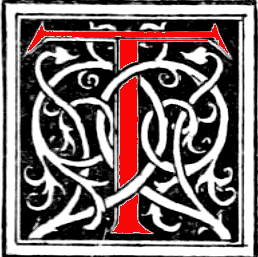
he St. John's Wood Clique was founded in 1862. It was a loose association of like-minded Victorian artists but, unlike groups such as the Pre-Raphaelite Brotherhood or the Idyllists, they seemed to lack a specific direction in their art. They mostly resided in St. John's Wood, northwest of central London, which was a fashionable area at that time for artists to live. The principal members of this group consisted of Philip Hermogenes Calderon, George Dunlop Leslie, William Frederick Yeames, George Adolphus Storey, Henry Stacy Marks, David Wilkie Wynfield and John Evan Hodgson. Honorary members included Val Prinsep, Frederick Walker, Eyre Crowe, and George Du Maurier. All the members of The Clique had at one time studied at Leigh's Academy with the exception of Leslie and Yeames. Most of its members belonged to the Artists Rifles. Members of the The Clique primarily painted genre pictures, particularly of literary and historical subjects. Early in their careers some of these artists passed through a Pre-Raphaelite phase such as Calderon's Broken Vows, Leslie's Matilda, Yeames' Rosalind, or Storey's The Bride's Burial. Leslie, when writing about the career of H. S. Marks, made these comments on the early influence of the Pre-Raphaelites on young artists of the time: "Those were exciting times for a young artist just commencing his career. The electrifying efforts of the Pre-Raphaelite Brotherhood and the writings of John Ruskin were stirring the hearts of everyone. At each succeeding exhibition the new school increased the numbers of its adherents" (238). It is no wonder therefore that so many young painters fell under its spell. Later in their careers some of the group fell under the influence of another progressive development, the Aesthetic Movement, including Calderon, Storey, Yeames and Leslie.

A Vision of The Clique. 1894, by Frederick Walker.
Unlike many Victorian artists, who were antagonistic to their fellow artist competitors, The Clique was supportive of each other's efforts. Gladys Storey, the daughter of G. A. Storey, recalled that this "splendid, happy, unselfish and high-spirited" group met almost daily for mutual criticism, encouragement and advice (52). Henry Stacey Marks expressed the group's creed in his reminiscences: "'The Gridirons' was another name we gave ourselves, and this was the best, and most descriptive of our object in forming this band, which was, while continuing to be the best of friends, to criticise each other's work in the frankest and most unsparing manner…We have all of us now to work together, and do our very best, not caring who is first or last, but helping each other, so that all may come out strong. The better each man's picture, the better for all" (147). Being "constantly on the grill" must have aided the group since virtually all of them were eventually elected members of the Royal Academy with the exception of Wynfield, possibly because he died relatively young at age fifty from tuberculosis.
Artists Associated with the St John's Wood Clique
- Philip Hermogenes Calderon
- George Dunlop Leslie
- Henry Stacy Marks
- George Adolphus Storey
- William Frederick Yeames
- David Wilkie Wynfield
- John Evan Hodgson
Links to Related Material
- A selection of photographic portraits of artists by David Wilkie Wynfield (including fellow-members of the Clique)
- David Wilkie Wynfield as a Photographer
- "The St John's Wood Clique," by Henry Stacy Marks (1894)
- Frederick Walker and the St John's Wood Clique
- D. G. Rossetti Roasting the St. John Wood's Clique
- The [earlier] Clique in the Kensington area
Bibliography
Leslie, George D. "In Memorium: Henry Stacey Marks R.A." The Magazine of Art XXII (1898): 237-243.
Marks, Henry Stacey. Pen and Pencil Sketches. Philadelphia: J. B. Lippincott Co., Vol. I, 147.
Storey, Gladys. All Sorts of People. London, Methuen, 1929.
Created 10 July 2023